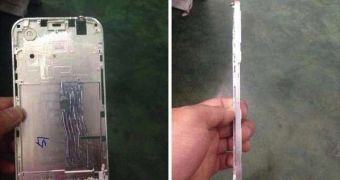Here’s one you don’t hear every day. One of Apple’s manufacturing partners in the Far East going by the name of Catcher Technology has managed to ruin an entire batch of iPhone 6 metal enclosures with a poorly calibrated anodizing process, thus losing three months’ worth of orders from the Cupertino giant.
The Chinese-language Economic Daily News (EDN) cites market watchers as saying that a batch of 4.7-inch iPhone 6 enclosures handled by Catcher Technology has been rejected by Apple due to flaws in the joints between the metal and plastic parts making up the chassis.
Upon seeing the sub-par hardware, Apple immediately placed short-term orders with its other suppliers – Jabil and Foxconn Electronics (Hon Hai Precision Industry) – leaving Catcher to repair its production lines, at the same time cancelling its orders with the supplier.
The sources said the issue was caused by Catcher's anodizing process, which will take 2-3 months to fix. It is unclear if Catcher has lost all iPhone 6 orders with Apple or only the three-month span, but it is reasonable to assume that if iPhone 6 is met with demand, Apple will have no choice but to enroll the supplier yet again.
iPhone 6 is coming out in the September-October timeframe according to most company watchers, at an event that will most likely be focused solely on the handset and iOS 8 – its underlying software.
Other announcements may well take place, such as minor revisions to existing product lines.
Based on blueprints leaked earlier this year, third-party case manufacturers have been able to put together various mockups depicting the iPhone 6 in both its variants (4.7-inch and 5.5-inch screen sizes).
Provided that these leaks have been accurate, the design of the phone is new, but not completely changed. For example, features such as the antenna breaks on the back of the phone, the dividing lines on its sides, and the top and bottom screen bezels have remained in place.
The handset is, however, substantially thinner and sports relocated buttons and ports. The volume buttons, for instance, are not round but oval-shaped. The Sleep/Wake button has been taken from the top of the device and relocated to one of its sides, for easier access (because of the increased size).
A rumor once broke out that Apple was talking to the carriers for a potential price increase (caused by the high bill of materials for the phone), but such rumors are yet to be confirmed.

 14 DAY TRIAL //
14 DAY TRIAL //